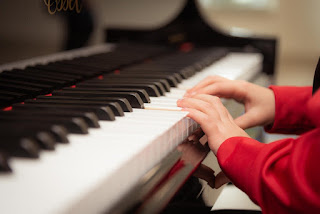Teaching Quarter and Half Notes in Private Piano Lessons
I love teaching piano lessons to young beginners. They’re full of excitement and a sense of wonder about learning to play an instrument! We cover so much in the first year of lessons, and a good lesson plan structure is vital to establishing students with healthy piano technique, solid music reading skills, and a developing sense of good tone and musicality, all while cultivating and maintaining the joy of music-making. To do this effectively, I focus on three steps of teaching each concept or skill: prepare, present, and reinforce. In any given lesson, I am getting the student ready for concepts that I will introduce later, presenting other concepts, and reinforcing concepts presented previously. The plan below outlines how I prepare, present, and reinforce the concept of quarter notes and half notes starting in the first lesson and continuing over the course of several weeks.
Resources
Method Books:
Faber Piano Adventures Primer Lesson Book
Music Pathways Piano Discoveries A
Games:
The original game reinforces the letter names of the keys. I use it for this purpose later, but I also take the same game concept to reinforce the names and values of quarter and half notes using the cards from Over the Edge (see below; you can also create your own deck of quarter and half note cards). The student and I each pick an animal eraser and start at opposite ends of the keyboard. We take turns drawing a card and naming it; if it’s a quarter note, we move 1 key closer to the middle, and 2 for a half note. The first person to Middle C wins! I always have the student start at the bass end, and only one of my especially perceptive students thus far has figured out they won so frequently because middle C is not in the middle. :)
This game unfortunately doesn’t seem to be available on the Internet anymore except this instructional sheet. Each player has a game board, and we take turns filling the spaces with flat marble gems (1 for a quarter note card drawn, 2 for a half note). If you overfill your “river,” you have to start over! Once the student learns whole notes, we add the whole note cards.

Comments
Post a Comment